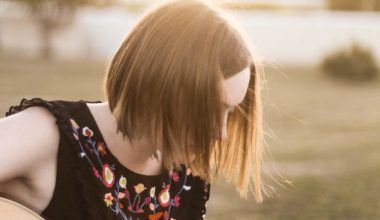If you’ve ever wondered, “What is an EP in music?” you’re not alone. EP stands for “Extended Play,” a term widely used in the music industry. Unlike a single, which typically has just one or two songs, and an album, which often contains 10 or more tracks, an EP falls somewhere in between. Think of it as a mini-album—enough music to keep fans excited but not as long as a full album.
EPs usually consist of 3 to 6 tracks and have a runtime of about 15 to 30 minutes. They give artists a chance to showcase their creativity without committing to the time and effort required for a full-length album. But why are EPs so popular, and how did they come about? Let’s dive deeper into their history, purpose, and role in today’s music industry.
A Brief History of EPs
To understand the purpose of EPs, it helps to know their origins. The concept of the EP dates back to the 1950s when vinyl records were the primary medium for music. Back then, records came in different formats: singles (45 RPM) and albums (33 RPM). EPs emerged as a middle ground, offering more songs than a single but fewer than an album.
In the early days, EPs were a cost-effective way for artists to release music. They allowed musicians to experiment with their sound without the financial risk of producing a full album. Over time, EPs became a staple for new artists trying to break into the industry and for established acts who wanted to release new material between albums.
Why Do Artists Release EPs?
Artists release EPs for several reasons, and it’s not just about saving money. Here are a few key reasons:
- Experimentation: An EP gives artists the freedom to try out new genres or styles without committing to a full album. It’s like testing the waters to see how fans react.
- Building Momentum: For emerging artists, an EP is a great way to introduce their music to the world. It’s longer than a single, so it gives listeners a better sense of the artist’s style.
- Filling the Gap: Established artists often release EPs to keep fans engaged while working on a full-length album. It’s a way to stay relevant and maintain interest.
- Storytelling: Some artists use EPs to tell a cohesive story. With fewer tracks, they can focus on a specific theme or narrative.
How Does an EP Differ From an Album?
At first glance, EPs and albums might seem similar. After all, both are collections of songs. But the main difference lies in their length and purpose.
- Length: Albums usually contain 10 to 15 tracks, while EPs typically have 3 to 6 tracks. This makes EPs shorter and easier to produce.
- Purpose: Albums are often seen as a complete body of work, showcasing an artist’s range and creativity. EPs, on the other hand, are more focused. They might highlight a specific style, theme, or mood.
- Cost and Time: Producing an album requires significant time and resources. An EP is quicker and more affordable to create, making it a popular choice for independent artists.
The Role of EPs in Today’s Music Industry
In the age of streaming, EPs have gained even more significance. Platforms like Spotify, Apple Music, and YouTube have changed how we consume music. Here’s why EPs work so well in today’s landscape:
- Short Attention Spans: Let’s face it; most people don’t have the patience to sit through a full album. EPs offer a bite-sized listening experience that fits modern lifestyles.
- Streaming Algorithms: EPs allow artists to release music more frequently, which can boost their presence on streaming platforms. Frequent releases keep an artist’s name in the spotlight.
- Flexibility: An EP can be anything the artist wants it to be—a collection of singles, a concept piece, or a teaser for an upcoming album.
Famous Examples of EPs
Over the years, many iconic EPs have shaped the music world. For instance:
- The Beatles – “Long Tall Sally” (1964): This EP featured four tracks and highlighted The Beatles’ ability to blend rock and roll with their signature style.
- Radiohead – “My Iron Lung” (1994): This EP helped the band transition from their debut album to their more experimental sound.
- Billie Eilish – “Don’t Smile at Me” (2017): This debut EP introduced the world to Billie’s unique voice and style, setting the stage for her Grammy-winning career.
Should You Listen to or Release an EP?
Whether you’re a listener or an artist, EPs have something to offer. For fans, they’re a great way to explore an artist’s music without committing to a full album. For artists, they’re an opportunity to connect with audiences and experiment with their craft.
If you’re an artist, consider these tips for creating a successful EP:
- Keep it Focused: An EP should have a clear theme or purpose. This helps it stand out and resonate with listeners.
- Quality Over Quantity: Since EPs are shorter, every track needs to count. Focus on producing high-quality music.
- Promote It Well: Treat your EP like a major release. Use social media, streaming platforms, and live performances to get the word out.
Conclusion: The Magic of EPs
In the ever-evolving world of music, EPs remain a vital and versatile format. They offer artists a way to share their music with the world and give fans a chance to discover new sounds. Whether you’re an aspiring musician or just someone who loves listening to great music, understanding EPs can deepen your appreciation for this art form.
Related Articles:
For further reading, explore these related articles:
- The Evolution and Vibrance of the Indian Music Industry
- Zee Music Company Owner: Shaping the Sound of India
For additional resources on music marketing and distribution, visit DMT Records Private Limited.






